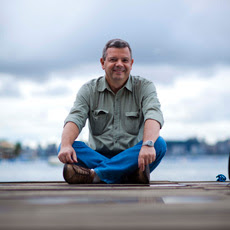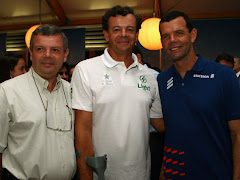quarta-feira, 24 de junho de 2015
ESCASSEZ DE ÁGUA: Califórnia investe em tecnologia de dessalinização utilizando energia solar
Solar Thermal Desalination Now Underway in Water-hungry California
As droughts continue to worsen worldwide, a project in California is using solar power to bring water to desperate agricultural lands.
June 23, 2015
By Susan Kraemer, Correspondent
Regional droughts are being exacerbated by climate change, which is mostly caused by what is tasked with bailing them out — fossil fuels. Israel, Australia, and now southern California have all turned to expensive energy-guzzling seawater desalination projects after historic droughts.
The controversial Carlsbad desalination project’s latest projected cost is now $1 billion. It will suck in 100 million gallons of San Diego’s seawater a day and force it through a series of filters to produce 50 million gallons of water a day using high-pressure reverse osmosis.
A modest solar thermal desalination alternative now quietly undergoing permitting inland would produce 5 million gallons of water, about one tenth of that of Carlsbad, but at a much lower cost of just $30 million, using a solar distillation process.
WaterFX will use a 24-MW trough-type solar thermal field supplied by NREL-collaborator SkyFuel to create direct steam from the sun to run multi-effect distillation, desalinating enough agricultural water for reuse to keep 2,000 acres of farmland irrigated each year.
Agricultural Desalination
WaterFX Chairman Aaron Mandell, who previously founded Oasys Water, a Massachusetts provider of desalination and water-treatment technologies, said he focused on reusing agricultural drainage water because agriculture is California's biggest water user. Selenium and other natural agricultural salts build up in soil, eventually making farming impossible.
"The agricultural sector uses about 80 percent of all the water in California," Mandell explained. "If only 20 percent of the water is being used for municipalities, and you reduce that water consumption by 50 percent, you've only made a 10 percent impact overall. Reducing agricultural use has a much bigger impact."
Last year WaterFX completed a six-month demonstration project that convinced the Panoche Water District to go ahead with the commercial plant. "The water district has been monitoring the pilot project and they're very happy with the results," Mandell said.
Once permitted and built in 2016, Panoche Water District will purchase the water by the acre-foot to sell to the parched farms both in its own and neighbouring water districts. WaterFX proved in its performance test that it can produce desalinated water competitively priced against the cost of surface water.
It will produce 2 million gallons a day in the first phase, then extend the solar field to to produce enough steam to supply 5 million gallons a day.
Desalination Technology
WaterFX uses thermal desalination, which leaves only about 7 gallons of highly concentrated brine per 100 gallons of intake water.
The Central Valley has ancient seafloor containing minerals and metals that are in the ground naturally, but as the fresh water is being used up, the sediment is concentrated.
This semi-solid brine of naturally occurring salts, which includes gypsum that is used in construction, boron, and selenium that is used in semiconductors, is worth millions, according to Mandell.
“We can actually separate and refine certain components for resale,” he says.
Thermal desalination is an ideal application for concentrated solar power (CSP), which turns sunlight to thermal energy. Unlike most CSP, which is used to ultimately drive a steam turbine to generate electricity, in solar desalination the steam is used directly in a solar still to simply evaporate out the waste.
WaterFX contracted with SkyFuel, the manufacturer of the SkyTrough, to supply both the tracking system and the half-megawatt parabolic trough solar collectors.
SkyFuel manufactures their own lightweight flexible mirror film on 5-ft wide rolls that can slide into position in their 20-ft wide lightweight parabolic trough frame units. Their patented film (ReflecTech) is much lighter and cheaper than the heavy segmented glass mirrors used in parabolic trough CSP, but is equally efficient. A thin layer of pure silver on the flexible aluminium sheet is protected from the sun by layers of polymers.
The solar collecting area and desalination plant would occupy about 1 acre for each 40 acres of farmland it can supply with irrigation.
Distributed Solar Desalination for a Drier Future
By contracting with water districts for a series of smaller and less expensive distributed solar desalination projects, Mandell sees a faster path through permitting than Carlsbad’s, once his initial 24-MW project is approved.
"Solar thermal desalination has really never been done before and we are going through right now exactly what permits are required as first-of-its-kind,” Mandell said.
There are also some special approvals required to produce extra water and put it into the California aqueduct system. But, once the first solar thermal desalination facility is operating, the inland empire contains no shortage of customers for the future. California is the fruit basket for the nation. Climate scientists have long predicted a drier future over the longer term for the region.
"We deal with farmers who have suffered substantial yield losses just due to the low quality of the groundwater, and they have to pump from deeper and deeper depths as the water table gets drawn down," Mandell said. "They are in pretty dire straits. They are now having their second year in history of zero water allocation.”
WaterFX expects its second solar thermal desalination plant to be approved this year and operate in 2016.
Fonte: Renewable Energy World
Assinar:
Postar comentários (Atom)























Nenhum comentário:
Postar um comentário
Contribua. Deixe aqui a sua crítica, comentário ou complementação ao conteúdo da mensagem postada no Blog do Axel Grael. Obrigado.